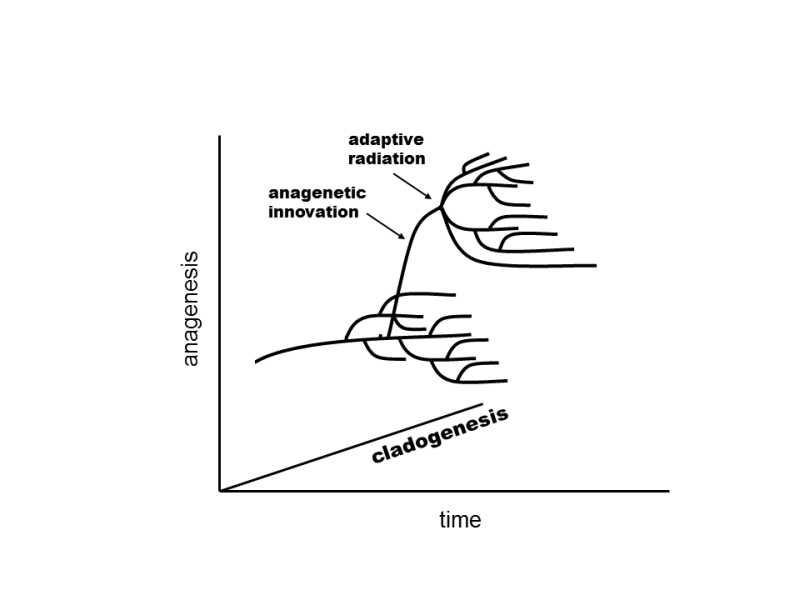XXVI.2.1.1 A major evolutionary innovation can lead to adaptive radiation of the evolutionary line
The formation of a key evolutionary innovation is a very effective way in which an anagenetic change can increase the probability and thus the frequency of speciation; this consists in a trait that enables its carriers to occupy a new adaptive zone, i.e. utilize a certain set of niches that were not accessible to them until this time.If this set of niches is very extensive, adaptive radiation can occur in the particular line.During adaptive radiation, the relevant line very frequently splits into a large number of different species, each of which can lead to the formation of an independent phylogenetic line (Fig. XXVI.4).These species divide the newly available niches up amongst themselves.If the new niches

Fig. XXVI.4 Adaptive radiation as a consequence of the emergence of a key evolutionary innovation. A key innovation can occur amongst the species of a certain phylogenetic line and can open new ecological niches for this species and enable it to gradually form a large number of species (adaptive radiation). If the niches of the new species overlap substantially with the niches of other species in the given line, the old species can gradually become extinct. However, it more frequently happens that the new niches overlap with the niches of species of completely unrelated lines or are completely unoccupied niches. In this case, both the local and the global diversity (number of existing species) increase
include an important resource that is simultaneously part of the niches of an already-existing species, the new species can have a substantial negative impact on the species utilizing these original niches.They can reduce the area of their occurrence, utilize their ecological niches and thus reduce the sizes of their populations or can even cause their extinction.Homoiothermy in mammals and active flight in birds are apparently examples of anagenetic changes leading to adaptive radiation.
